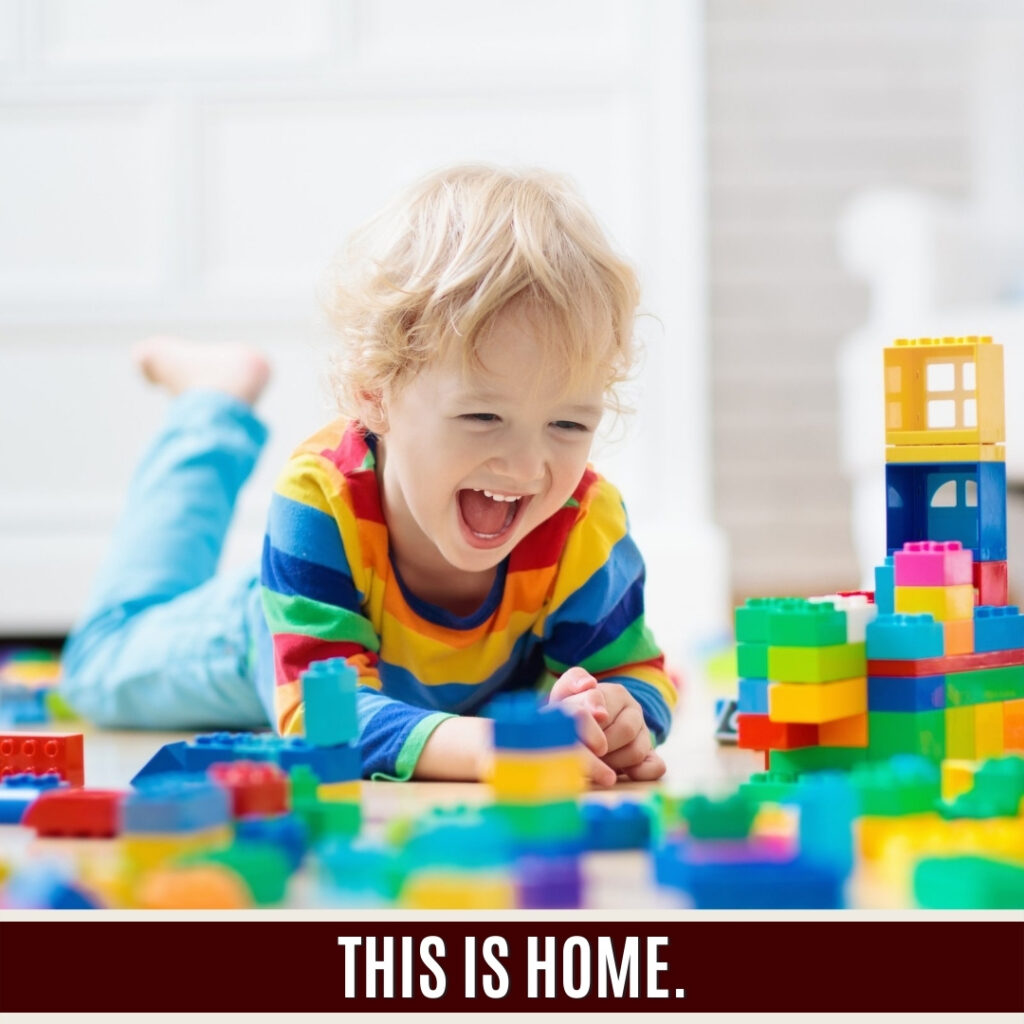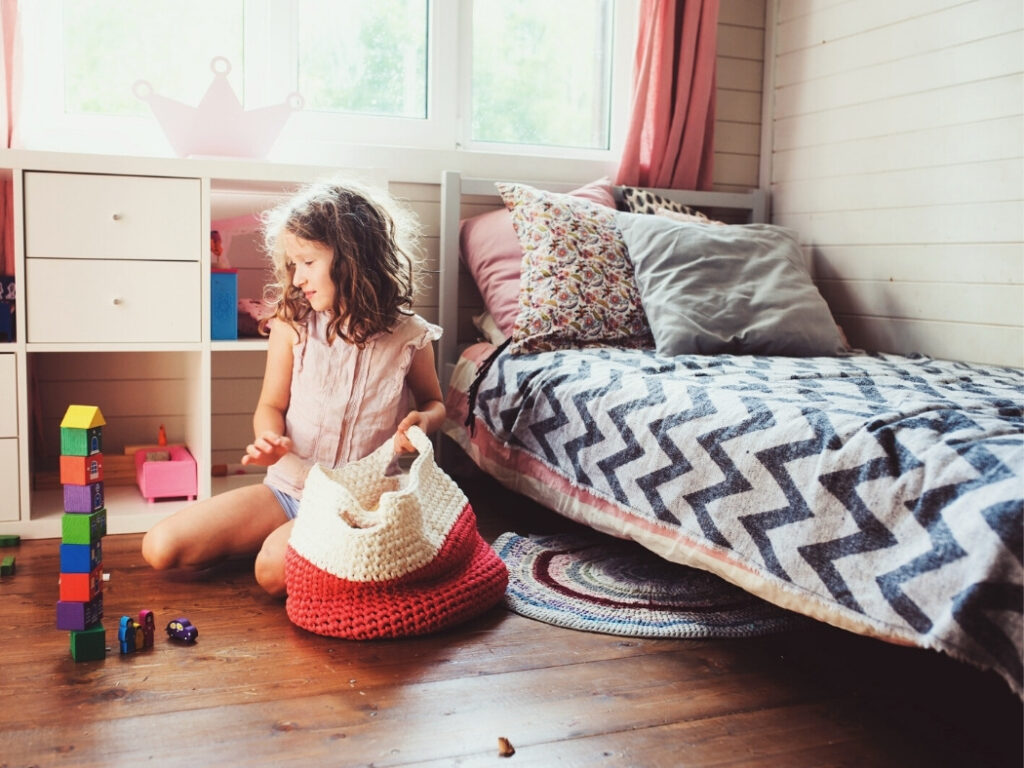If you’re looking for ways to declutter and organize your child’s room as they grow up, you’ve come to the right place. We’ve collected 9 of the best tips to help you keep your child’s room tidy as they get bigger.
When you have kids in the house, you can expect that your home will be noisy, chaotic, but still full of fun and merriment. At their age, all children want to do is play, color, explore, and try out as many new things as possible, especially since their curiosity levels are rising. But as they get their minds and hands busy from doing all sorts of children’s activities, they also tend to produce more clutter. Decluttering your living room and picking up after their toys is one thing.
However, decluttering their bedroom is another task that requires time, energy, and proper planning. Most kids feel more comfortable playing or learning new things inside their bedroom. They tend to throw more clothes on the floor or scatter toys everywhere. Consequently, as a parent, you should know how to keep up and organize their room. Otherwise, leaving their room disorganized and cluttered for a long time could pose a risk to their health and safety, such as tripping on small toys or inhaling dust and dirt from the piles of clutter.
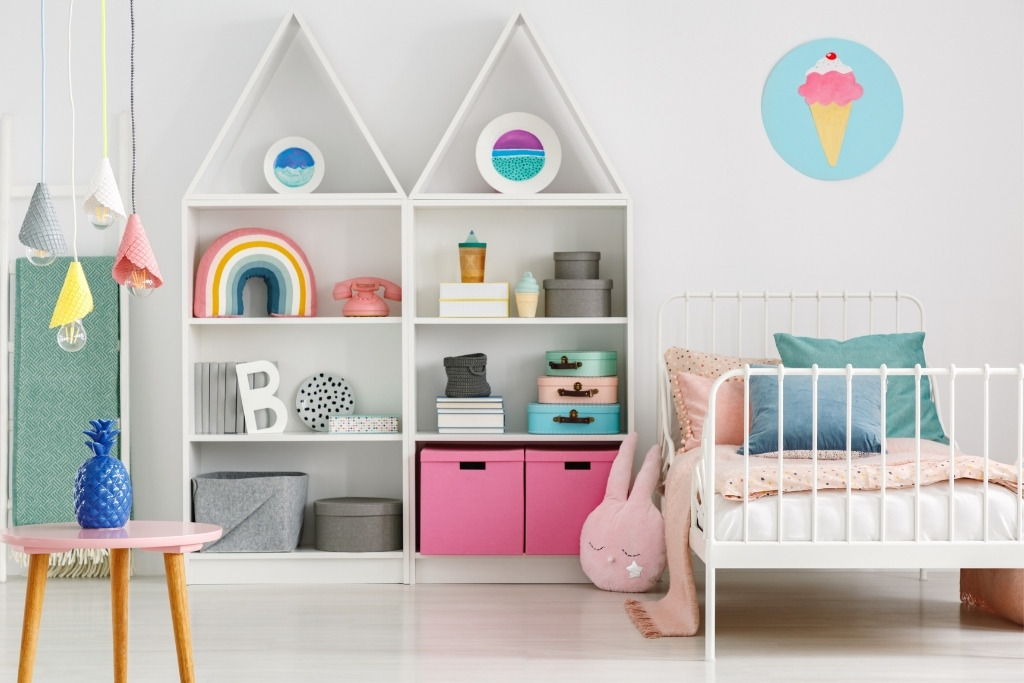
How To Get Started?
Your child’s bedroom holds a lot of purposes: sleeping area, playroom, study space, and storage area. And so, decluttering and organizing can be challenging, especially if the room looks out of control and you don’t know where to begin. Fortunately, these tips below aim to help you successfully bring your child’s room back in order and keep it in shape for life.
- Eliminate Things That Don’t Belong There
Perhaps the room is in total chaos with random stuff all over the place. Start by sorting them out and getting rid of the things that don’t belong there. For instance, if you find outdoor shoes, bath towels, or plastic cups on the floor, pick them up and take them out of the room. To save time, you can also put them together in a box and return them to their rightful places later.
Next, you’ll also need to pick up those items that are damaged or broken beyond repair. It can be broken toys, torn clothes, damaged shoes, and the like. Since they’re likely unrepairable, your best option is to take them to a recycling facility or dispose of them for good with the help of rubbish removers. While you’re at it, you can also take out your child’s garbage bin in the room and empty it together with the disposable items.
- Sort Out Which Things Should Stay And Go
Assuming that the things left in the room are the ones that belong there, it’s time to sort out which should be kept and stored and which ones should be donated. This may be easy for you, considering you’re not arranging your things and don’t feel sentimental. However, your child may be hesitant to let go of some of their things. They may refuse to cooperate, especially if you’re about to give away their old toys or clothes.
Accordingly, you need to help your child come to terms with the essence of letting go of their things. Explain to them in a manner that they understand how decluttering and organizing are something that they’ll occasionally deal with in their lives. Help them learn more about how donating things is necessary, especially if they don’t need or use them anymore (e.g., baby items). You can also tell them how donating their old stuff can help the other kids in need. Use this opportunity to introduce generosity and compassion to your kids.
As much as possible, never throw or donate their things behind their back as this will only break their trust in you, and they’ll certainly feel betrayed for not asking their permission first. After all, it’s their things. To make the donating process easier and not too overwhelming, you can make it fun by playing a game while sorting.
For instance, you can get two huge boxes with the label ‘donate’ and ‘keep,’ then ask your child to shoot the things (like playing basketball) which they’re ready to give away on the donation box. Then, make sure to reward them for their efforts by treating them with their favorite foods or giving them praises, hugs, and kisses for finally learning the essence of helping others.
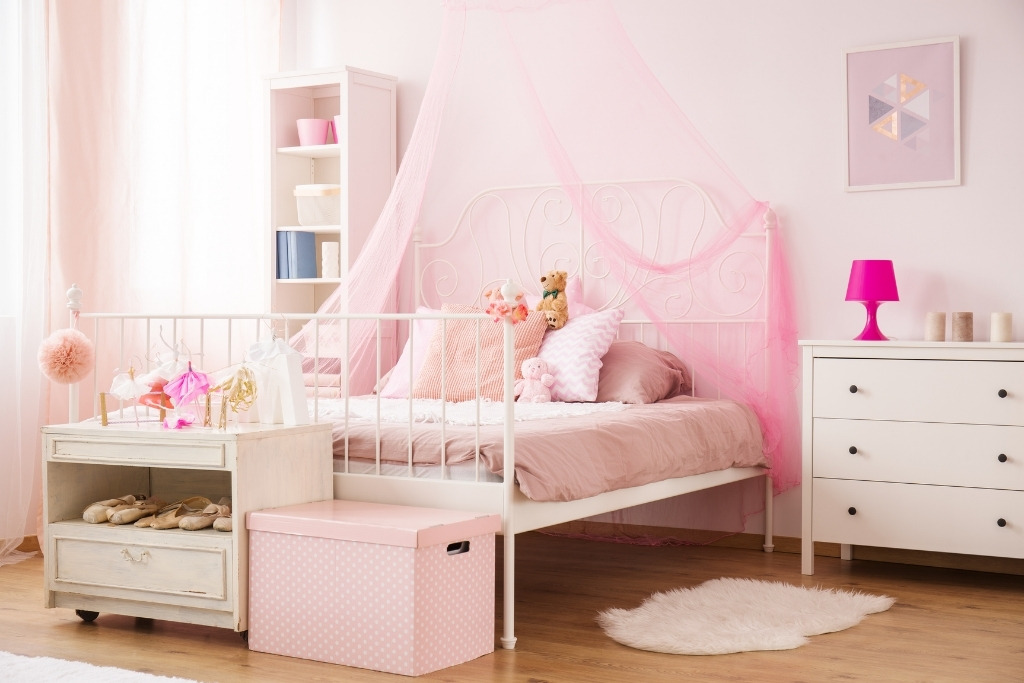
- Evaluate The Space
Now that the extra things are eliminated, returned to the rightful rooms, or donated, take a walk around the area and evaluate. Preferably, involve your child before you start reorganizing their things. Children, especially since they’re growing up, tend to personalize their room according to their preferences, idols, or favorites. For example, a child fond of playing with building blocks would need a huge space for playing instead of their bed.
If your children are into fashion, you’ll need more storage for their clothing collection. Meanwhile, a child who’s into reading or coloring books would need ample lighting and space on their study desk. It’s advisable to always consult them about how they’d like their room to be organized. When you are working to declutter your child’s room, don’t forget to consider their age and level of activity too.
- Store Things According To Category
When clothes, toys, and coloring materials are mixed together, they will definitely look disorganized no matter how much you arrange them on the shelves or drawers. An excellent way to resolve this problem with a long-term solution is by storing their things according to category.
For instance, all toys must be stored together in one box or drawer. Meanwhile, clothes and uniforms should be in the closet. Their books, coloring materials, and other craft tools will be stored in the drawers of their study desk. To maximize space, you can invest in pull-out drawers underneath their beds to keep their extra toys or costumes. A categorized storing system will make it easier for your child to establish a habit of returning things to their right places after being used.
- Use Labels Or Color-Coding
If storing things in their categories is still confusing for them, consider using labels or color-coding as their guide. Keep in mind that some kids like to match items visually like colors, labels, or even pictures that would guide them. This is an excellent way to help them turn this into a habit until they get used to it until adulthood.
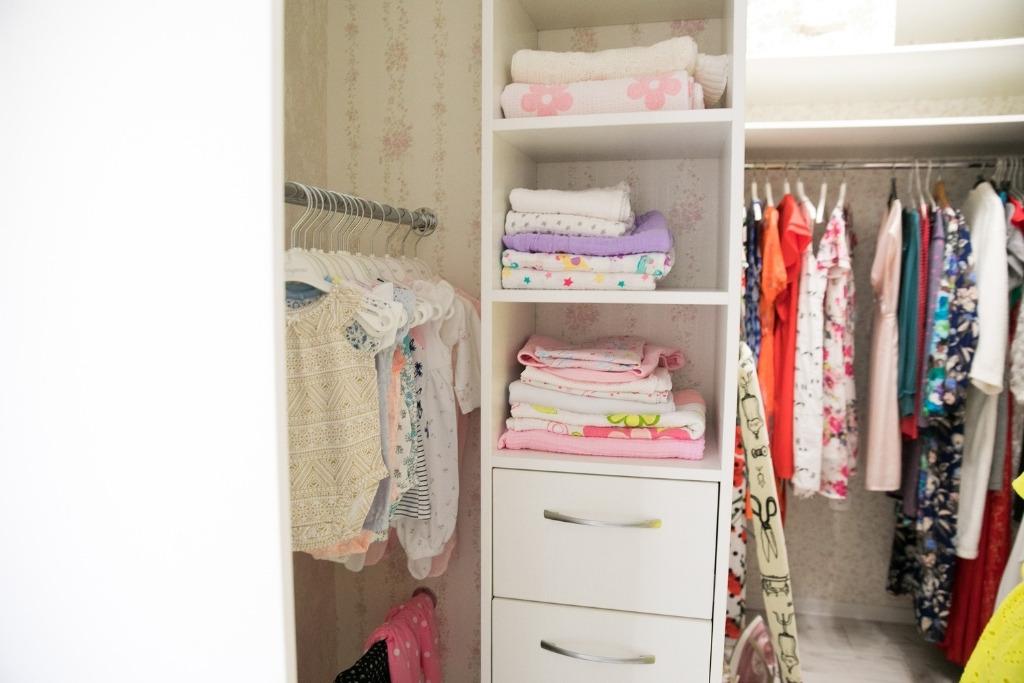
- Make A Kid-Proof Closet
One of the reasons children tend to mess up their clothes easily is because of the design of their closets. Unlike adults, some kids tend to just quickly pull out their clothes from underneath, causing the clothes on the top pile to fall over and get disarranged. To make it easier for them to pick clothes, opt for a kid-proof closet.
When you are looking to declutter your child’s room, you should go for a closet with more space for hanging clothes, as this makes it easier for them to go through their clothing and retrieve one without ruining the other hanging clothes. Then, you should fold the ones which you think they rarely use and place them at the top shelf out of reach. This way, whenever they need to get something from the folded pile, they can ask for your hand, and you can get the folded clothing without ruining the pile. You can use drawer dividers for the socks and underpants to keep them organized and easier to locate.
- Use The Wall For Storage
If their room has limited floor space, you can utilize the walls for storage. For instance, you can install narrow bookshelves so it’ll be easier for your child to pick the book they want instead of pulling every book and messing up with the arrangement. You can also install some wall hooks so it’ll be easier for them to hang or retrieve clothes, shoes, and toys, rather than throwing them on the floor. If your child loves to collect school bags, the hooks can also be a perfect place to store them.
- Have A Minimalist Mindset
Once you’ve had everything organized and in place, see if you can do more decluttering in your child’s room. For example, your child’s trophies and medals from the drawing contest or science fair lining up on their shelves may look great and appealing for you, but ask your child if they appreciate this type of aesthetic. Some kids prefer their past achievements hidden, especially if they’re beginning to outgrew that hobby or sport as they enter adolescence. So, have a minimalist mindset and ask your child which ‘special’ items they would like to display on the surfaces.
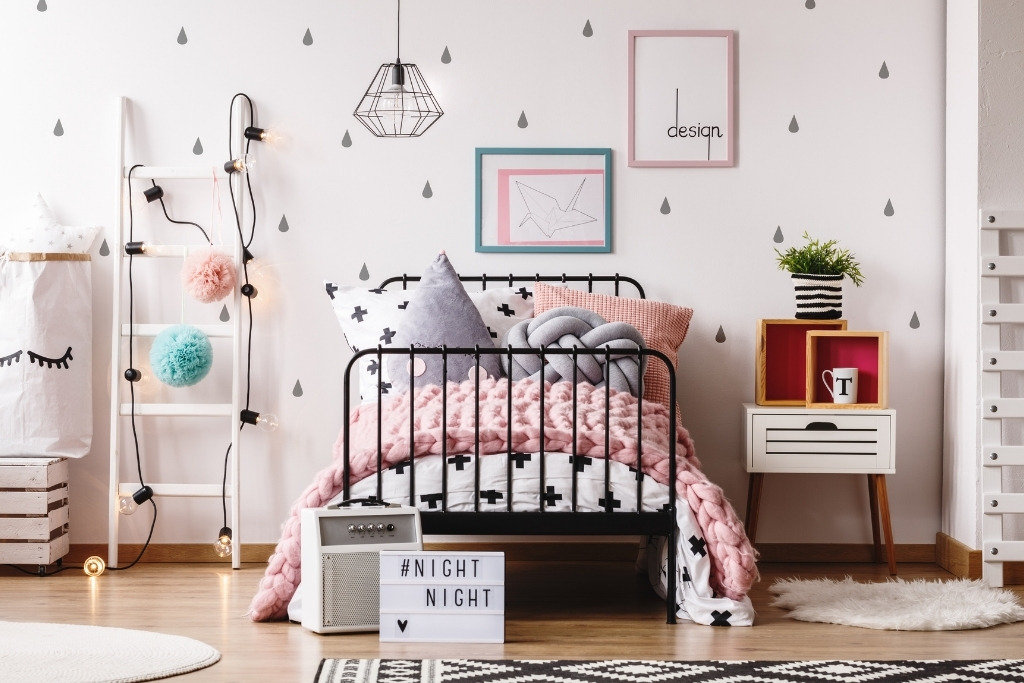
- Make The Bed
With everything decluttered and organized, it’s time to make the bed, which is the final finishing touch. Their bed is probably the focal point of the room which means organizing it will make the entire room look more polished. As you make the bed, see if they need new sheets or if they’re keeping too many pillows and stuffed toys. Consult your child and see if they want to reduce the number of pillows or stuffed toys to make it easier to organize every day when they wake up.
Wrapping Up
Now that you have the tips needed to declutter and organize your child’s room, you can get started at your most convenient time. But remember, the challenge isn’t always on getting started. It’s more on how you maintain your child’s room cleanliness. So, as part of parenting, be the best example you can be and show your child how to keep their room organized. The earlier they learn the importance of room cleanliness, the easier they can establish cleaning habits that they can take with them as they grow older.
